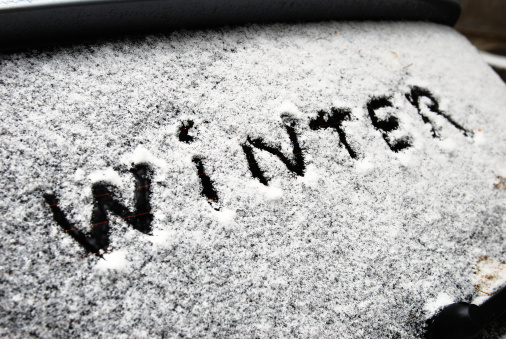With winter approaching it’s a smart idea to be prepared ahead of time. Here are some important things you can do to better prepare your shed for the wintertime snow, ice and wind.
The best way to ensure your shed lasts through harsh weather is investing in a durable and versatile Cook Portable Warehouse. Here are some of the features that make a Cook portable building better than the rest!

- The 2×4 gusseted trusses are placed 24-inches on center, which adds strength to the entire roof system and prevents sagging. So you won’t have to worry about the weight of snow and ice on your shed’s roof.
- Cook uses 7/16” OSB (oriented strand board) for roof decking because it’s manufactured with heat resistant glues that prevent delamination and warping.
- Shallow Groove Siding enhances the aesthetic value of buildings without sacrificing the strength and integrity of the 19/32″ LP Smartside. It’s far superior to the competitor’s siding, holds up to weather for decades and is backed by a 50-year manufacturer’s warranty.
- The two adjustable tension rods on every door prevent warping from continued exposure to the elements as the portable shed ages.
- The vinyl drip edge used on every roof prevents water damage to decking by diverting water along the edge of the shingles.
Those are just some of the many, many features that make Cook the best quality portable building on the market! For more on all the features included with every building, click here!
Before winter begins, use these 4 important tips to prepare your shed for winter.
{{ script_embed(‘wistia’, ‘svnh2q9mo7’, ‘undefined’, ‘responsive’) }}
Clean out the interior
First sweep out the dirt, clean shelves and take all the trash out to help discourage mice and other rodents from making themselves at home in your shed.
With a little planning, you can safety store most items in your shed all winter. For example, keep garden/work gloves in covered plastic bins and any dry pet food in metal garbage cans with secure lids.
Clear away the debris from outside
Take a walk around your shed and see if there are any weeds, branches or piles of leaves around the walls. Also, clean out any empty wasp nests or hives outside your shed. The presence of debris can encourage mice to take up residence in and around your shed during the winter.
Check the weather stripping
One of the most effective things you can do to get your shed ready for winter is to check the condition of the weather stripping around doors and windows.
Weather stripping can prevent moisture from gaining access to your shed. With more inexpensive shed models offered by other companies, the build-up of moisture can lead to mold or rot the wood of the shed.
If any of the pieces of weather stripping are cracked or tearing away from the wall, you should replace them. Adding new pieces or repairing the existing pieces will be a relatively inexpensive and simple task.
Make small repairs
Make any necessary minor repairs to your shed before the cold weather sets in. This will help you avoid larger issues after the winter months are over.
So if you notice any snow piling up on the roof of your shed, clear it off with a broom or rake. Snow and ice can weigh down the roof of a shed causing problems over time for buildings that don’t have the roof features that Cook offers.
For more on Cook’s construction standards and building features download the FREE guide by clicking below!
{{cta(’04cfd376-eb36-4b70-8fe9-3742b27cb78e’,’justifycenter’)}}
